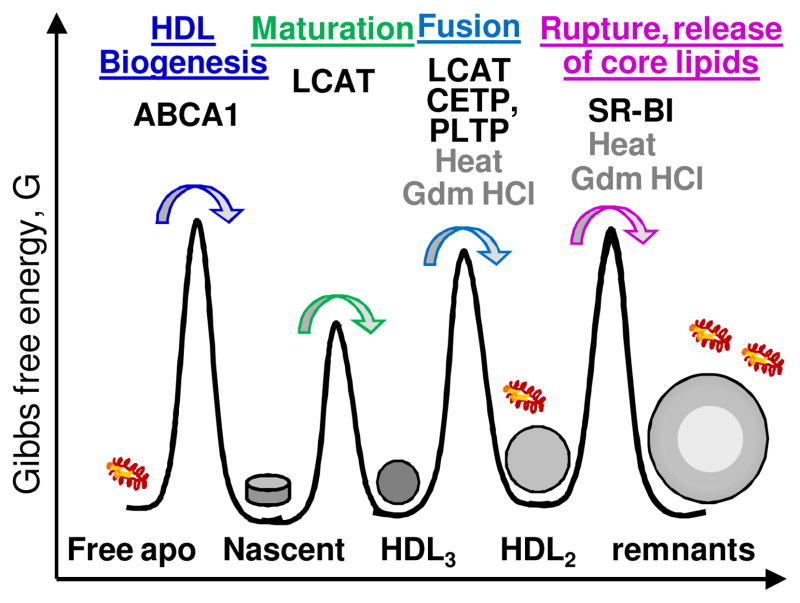Figure 4.
Cartoon illustrating free energy barriers between HDL subclasses. The figure is not meant to represent the relative energies of the stable HDL states or the barriers between them. This dynamic energy landscape depends on the biochemical composition of HDL that constantly changes, and on the environmental conditions. Factors that help traverse these barriers by lowering them during reverse cholesterol transport are indicated: ABCA1 transporter, LCAT, cholesterol ester and phospholipid transport proteins (CETP and PLTP), hepatic lipase and SR-BI receptor. Remarkably, thermal, chemical and other perturbations (e. g. by detergents, bacterial factors etc. 46, 47, 52, 53]) induces very similar HDL fusion, rupture and apolipoprotein dissociation, mimicking key aspects of the morphologic HDL transitions in vivo. This similarity suggests that HDL remodeling in vivo and in vitro is modulated by similar kinetic barriers. Figure modified from [10].

